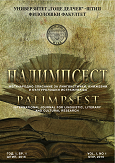AGITATION AGAINST VACCINATION. METAPHORICAL CONCEPTUALIZATIONS OF VACCINE HOSTILITY IN BLOG COMMENTS FROM THE STANDARD (2021)
DOI:
https://doi.org/10.46763/PALIM2491839sAbstract
The SARS-CoV pandemic has increased the influence of (social) media in spreading (mis)information about vaccines and side effects. After the coronavirus outbreak, many people obtained their information primarily via online news portals and social media and were suspicious of official announcements in the “reputable” media. The article therefore takes anti-vaccine propaganda in public discourse during the Corona crisis (2021) as a starting point and illustrates how the refusal to vaccinate is metaphorically conceptualized in selected comments on a blog entry in the Austrian daily newspaper Der Standard, which was followed by over a thousand postings. Metaphor models in the context of the global corona infection not only demonstrate how abstract concepts are linguized through metaphorical expressions and thus made tangible, but also which conceptualizations dominate and can thus claim collective relevance.
Keywords: Corona crisis; vaccine hostility; infodemic; blog comments; conceptual metaphor theory; metaphor models.


